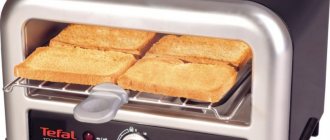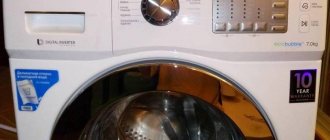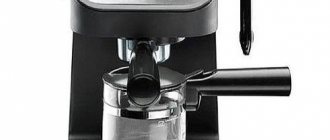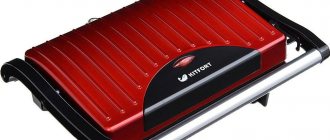What are the advantages of a multicooker?
You are probably now waiting for us to start talking about the fact that a multicooker is such a miracle of technology that cooks on its own! Like a magic pot from a fairy tale. He clapped his hands and said the cherished phrase: “Cook the pot!” and he took it and cooked it.
Funny? And, by the way, there is nothing funny. This is exactly what most men who are very far from the kitchen think. Surely, you have more than once heard reasoning in the style of: “Yes, my wife does almost nothing around the house! She does the laundry with a washing machine, cooks with a multicooker, and cleans with a vacuum cleaner.”
I just want to hit these theorists with something heavy, honestly! But, by and large, they are not to blame. This is all the machinations of cunning advertisers.
But in fact, before the lid of the “magic pot” slams shut, you need to perform exactly the same manipulations with the products as for putting them in a regular pan:
- Wash
- Clean
- Rinse again
- cut
- Fry
- Place in the slow cooker
- Salt and pepper
And then the “magic” begins. Therefore, as you yourself understand, the advantages of a multicooker are not at all that it cooks on its own and it will be faster. The advantages are completely different.
For example, that...
- The food it produces is healthier due to the fact that cooking takes place at low temperatures. That is, the product is not boiled, but simply simmered, while retaining maximum taste and vitamins.
- The dish will not boil away, it will not run away. And this is a plus, you will agree. Again, there is no need to wash the stove.
- You can prepare a dish and leave it on the warm setting for many hours. This is better than wrapping a saucepan in five blankets, keeping it warm until the right time. This is especially convenient when you go for a walk with children. I set it to cook, came back, and the finished dish was already waiting for you, piping hot.
And that's probably where the positives end. Frankly, of these three advantages, only the first is truly attractive. Indeed, the destruction of vitamins in it is less than at a boiling temperature of 100 °C. The multicooker cooks at temperatures up to 60 degrees in most of its modes.
And plus, you can use much less oil thanks to the non-stick coating. And also, cooking takes place without access to oxygen, which oxidizes fat. And fat oxidation is not a healthy thing at all. During the frying process in a regular, hot and open frying pan, fats are converted into aldehydes and lipid peroxide. And they contribute to the development of cancer cells and the development of cardiovascular diseases...
Therefore, if you are a fan of healthy food, you can purchase such a thing.
Moreover, those who care about their health always eat a lot of cereal dishes. And porridge is the strong point of multicookers! They look simply amazing in them. But this is discussed below in a separate block. See also -
Harm of a multicooker to human health: myth or reality?
How to use a multicooker
- Cooking . Standard program suitable for most products.
- Extinguishing . Choose for cooking meat, fish, vegetable side dishes, soups or jellied meat.
- Frying . Use the mode as a main or additional mode to fry meat or vegetables, or make cutlets.
- Steaming . Processing products with hot steam with maximum preservation of their beneficial properties.
- Baking . Run the program to prepare biscuits, casseroles, and buns within an hour. Fry meat, vegetables, cutlets.
- Jam . Make dessert from any berries and fruits.
- Porridge . Set a delayed start in the multicooker in the evening to get a hot dish with milk or water in the morning.
- Sterilization . The mode is intended for processing cans and children's dishes.
- Languishment . The dishes come out like they came out of the oven.
- Deep frying . Products are processed in oil or batter.
- Yogurt . Make a dish from milk or sourdough with added sugar.
Steamer function
- Take a special steamer container from the kit (looks like a colander). Download products.
- Pour water into the main bowl and install a colander. The walls of the bowls are pressed tightly against each other, but there will be space between the bottoms.
- There should be enough water inside so that its level does not touch the bottom of the colander. Use a measuring cup to fill the slow cooker with liquid. As a rule, 2 glasses are required for one start. If there is too much liquid, the cooking time will increase and the food will not be crispy or poorly cooked. With a small amount of water, there is a risk of premature boiling of the liquid and damage to the bottom of the pan.
- Select the “Steamer” mode, set the time, click on “Start”.
- When the dish is ready, a characteristic signal will sound. Open the lid carefully so as not to burn your face or hands from the hot steam. Some models are equipped with a valve to release steam when the lid is closed.
Articles on the topic
- How to find a stolen phone yourself. Are phones found if stolen?
- ADSM vaccination for adults - reactions and complications. When and where do adults get the ADSM vaccine?
- How to set the BIOS to boot from a flash drive
Are there any downsides?
Well, what about it? There are not so few of them, frankly speaking. But, in fairness, as for the cooking process itself, these disadvantages are noticeable only to those who deftly manage cooking on a regular stove. But for children or very young housewives, using a multicooker is just the thing.
But let’s return to our sheep, that is, the minuses:
- The biggest disadvantage is that a dish cooked in a slow cooker cannot be left in it, cooled and put in the refrigerator. It must be poured from the bowl. And this is still a pleasure. It’s not very easy to remove food, especially if it’s hot.
- Again, the multicooker consumes electricity, and quite a bit. If you already had an electric stove, then you have absolutely nothing to lose. And if you used gas, then what's the point? Gas will be cheaper.
- It is very inconvenient to wash it. The bowl is quite fragile, and if you damage or drop it, you will cost a pretty penny; it needs to be replaced urgently. In addition to the bowl, you need to wash the silicone ring, lid, and valve. And that’s all – I don’t really understand it. Of course, there are models with a removable lid, but still, it’s more hassle than washing smooth, metal pans.
- She looks, to put it mildly, uncomfortable in the kitchen. Some kind of mini-vacuum cleaner, not a saucepan. Even food does not look as appetizing in it as in ordinary dishes. And our visual perception is everything, as they say...
- If the process has already started, then it is no longer possible to influence the result. And by opening the lid to try, you only lengthen the cooking process, which means you add an extra watt or two of electricity consumption.
- Food cooks much faster on the stove than in a slow cooker! Twice - exactly. This is because the temperature there is low.
- Baking in a slow cooker does not have a golden brown crust, no matter how hard you try.
- The taste of the dishes is quite specific. And not everyone will like food from a slow cooker.
- Inability to prepare large amounts of food. That is, for a large family, this device is absolutely useless.
- Also, the downside is that it needs to be allocated a separate place in the kitchen. For ease of cooking, the multicooker should have a stationary place, since taking it out and hiding it is not very convenient. This is not your little blender.
These are the things, dear housewives.
Let's put it this way: if you have an antediluvian electric stove that takes a long time to heat up, takes a long time to cool down and “eats” electricity, then it makes sense for you to buy a multicooker. If things are different for you, then we would not advise you to get excited. Moreover, you haven’t read the next block yet... See also -
How to wash a multicooker outside and inside: basic care rules
Tips and tricks for cooking in a slow cooker
The operating principle of the device is based on 3D heating technology. After pressing the “Start” button, the bowl of food is gradually heated by electromagnetic waves. The desired temperature level is maintained throughout the entire cooking process. To make the dish as healthy and tasty as possible, it is important to follow the rules for selecting and preparing ingredients.
- How to get rid of flies in an apartment
- Non-addictive laxatives
- The most delicious marinade for pork
Choose the “right” meat
Suitable for cooking in a slow cooker:
- chicken – thighs, legs, breast, wings;
- pork – neck, cheeks, knuckle, shoulder blades, trotters;
- lamb – drumstick, neck, shoulder, shoulder blades;
- beef - brisket, cheeks, drumstick, tail.
It is advisable to buy meat with a minimum amount of fat. This will not affect the taste, and the food will be healthier. During the cooking process, the meat will release aroma and juice and completely saturate the rest of the ingredients with it.
Prepare the ingredients for the dish in advance
- Before using the slow cooker in the morning, cut up the ingredients you need to cook the night before, put them in a container and put them in the refrigerator.
- Place only warm ingredients in the bowl. Before cooking, remove food from the refrigerator and leave to warm at room temperature for 20-30 minutes. Thaw meat from the freezer completely.
- To obtain a crispy golden crust, lightly fry the meat before adding it to the slow cooker. If you don't have time to pre-treat, simply remove the skin.
- Fry vegetables (onions, garlic, carrots, ginger) in advance to remove excess moisture from the food and give the dish a rich flavor.
Prefer dried herbs
During long cooking, fresh herbs soften greatly, lose their beneficial qualities and become brown, so add them at the very end of cooking. Along with the main products, it is allowed to immediately add dry herbs and spices. During the cooking process, their beneficial properties are gradually and fully revealed: the dish turns out spicy and aromatic.
Reduce liquid volume when adapting recipe
The multicooker lid closes tightly, so the water does not evaporate during cooking. In addition to the sauce, the food produces a lot of juice, which can cause liquid to splash out of the pan and contaminate the space between the walls of the body and the bowl. Subsequently, cleaning such places is extremely problematic. To eliminate the problem, initially pour a little water: fill the bowl 2/3-1/2, and the sauce should only cover the food.
Do not leave the dish to cool in the slow cooker
The bowl retains heat for a long time, which promotes the accumulation and active proliferation of bacteria and rapid spoilage of food. If there are leftovers in the slow cooker after dinner, put them in a container. Wait for the food to cool completely at room temperature, then put it in the refrigerator.
For a snack: counterfactuals “minus” versus facts “plus”
- If you want to cook healthy food at low temperatures, then nothing prevents you from using a regular oven and utensils with a tight-fitting lid.
- If you don't want to consume the aldehydes produced during frying, then it costs nothing to choose the right fats and close the lid on a regular stove. Google about the right fats, because this is a topic for a separate article and it is inappropriate here.
- If you want your food piping hot, there is nothing stopping you from heating it up in 3 minutes in the microwave. Again, this will take much less electricity. Either three minutes of warming up, or an hour, two, three, five. Is it worth it?
- If you want to prevent it from running away, just follow the process! No, well, if you do have multiple sclerosis, then a multicooker is an indispensable item in your kitchen, there’s no arguing with that.
- If you want to use less fat, then buy regular ceramic or Teflon dishes, they don’t need a lot of them either.
How to properly prepare a multicooker for use after purchase?
First, unpack the device: take it out of the box, remove the foam inserts, remove the plastic bags . Remove the “hidden” packaging backing between the bottom of the pan and the heating element, and remove any advertising stickers. Be careful not to rashly tear off the sticker with the serial number, otherwise the right to warranty repair of the equipment will expire.
Before you start using a brand new multicooker from Redmond, Polaris, Mulinex or another brand, it should be thoroughly washed to remove any remaining factory dirt. The bowl and steam outlet valve should be rinsed especially thoroughly. The preferred option is to wash in warm water with a drop of household detergent added .
Also read: How to clean a coffee machine from scale and coffee oils
If the pan is coated with Teflon rather than ceramic, be careful not to scratch anything.
After washing, wipe the surfaces dry and reassemble the multicooker, returning the removed elements to their place.
How to use it anyway?
Must be used according to instructions. In general, all multicookers are designed almost identically and there are no special differences.
How to turn on the multicooker? To do this, there is a “start” mode, “heating” and several programs with certain, preset temperature conditions for certain dishes: pilaf, soup, buckwheat porridge, frying, baking, etc.
There are absolutely no secrets here. The only thing is to strictly adhere to the dosages of water indicated in the recipes that come as an appendix to the instructions, and which are different for all models of multicookers.
But this, of course, is not a panacea. All the same, there may be a lot of water or a little. Everything is learned through experience, there is no other way.
What volume should I choose?
If you have a large family, then take a larger bowl. And do not forget that the actual volume will be one and a half liters less than indicated. If the multicooker is 6-liter, then barely 4.5 liters of soup will come out; if it is 3-liter, then 2.
In addition, do not forget about additional functions. Let's say a deep fryer in a six-liter bowl is a stupid and unprofitable thing. Too much oil will be lost, and not enough food will fit.
And, a three-liter steamer will hold exactly 2-3 manti. And they will take a long time to prepare. So, before purchasing, it is advisable to determine for yourself which dishes will be cooked in it in the greatest variety.
Let's talk about bowl coverings
There are three types of bowls:
- Teflon
- Ceramic
- Steel
There is nothing special to say about Teflon; everyone already knows the properties of this coating. You need little oil, it doesn’t burn, it’s healthy... But, besides this, don’t forget that if even one scratch appears (and it will appear soon, don’t even doubt it), then all the benefit instantly turns into great harm. And you need to change such a bowl as quickly as possible.
Ceramic bowls are good in all respects. They are durable, environmentally friendly, and food does not burn in them. But, if while washing it accidentally slips out of your hands, then write letters. And buying a new one is expensive. These are the most expensive bowls.
Steel bowls are ideal for soups and other liquid dishes. The stove won't work in them, it will burn. But such a cup is eternal.
In general, the most ideal option is to have two bowls. Let's say one is stainless steel for soups, and the second is ceramic for baking and stewing.
What to look for when purchasing
- Try to choose a model with a removable lid
- Choose a model with a removable bowl. Although this is a rarity now, you still come across models in which you cannot remove the bowl. Of course they are cheap. But - disposable in the end. Because the bowls there are Teflon.
- The bowl must have handles. Without handles it is completely inconvenient. You need to buy special pliers for removal. And small things tend to get lost at the most inopportune moment.
- Pay attention to whether there is a delay start function. It's comfortable.
- Do not buy a multicooker that does not have the function of turning off the automatic heating mode. A very inconvenient function in practice. It turns off, but continues to drain energy and dry out food. And housewives usually simply forget that she is still working. Therefore, it makes much more sense to manage it yourself. It needs to be warmed up - I set it up. No, I turned it off.
- There should be a reservoir on the lid to collect condensate. Otherwise, the condensation that flows down when the lid is opened often spoils the finished baked goods.
How to turn on the multicooker for the first time?
To quickly begin to understand how to use a multicooker, we recommend that you start learning right away with something useful.
In our case, from the practice of getting rid of the unpleasant chemical smell emanating from “fresh” plastic and protective coatings.
Follow the following sequence:
- Press down the lock button on the handle and at the same time lift the lid up.
- Pour 200-300 ml of water into a cup with a small amount of 9% table vinegar (1-2 tablespoons).
- Close the lid. The signal for correct slamming is the click of the lock.
- Inspect the cable. If there are no defects, insert one end into the multicooker connector (as a rule, it is located in the rear lower part of the case), and the other into a 220V socket. A beep should sound.
- Click the "Menu" button on the panel until the display shows the "Reheat" or "Steam" mode. If you can’t select a program using the suggested method, look for video tutorials on how to use your model’s multicooker.
- All that remains is to figure out how to set the time on the multicooker. In most household appliances this is done simply. You need to press the button with the image of a clock, then use the “+” and “-” keys to set the number of hours. To switch to setting the minutes, press the button with the clock icon again and enter the desired value using the “+” and “-” keys. In order for the smell of plastic to evaporate, the water-vinegar solution must boil for 15-20 minutes.
- Press "Start" to start the appliance. Wait for the program to complete and turn off the power supply (many devices automatically start the warming function after the end of the program).
Also read: Cleaning a gas boiler with your own hands at home: basic methods
Before using the multicooker again, drain the liquid and rinse the cooled pan to remove any remaining vinegar.
You can finally figure out how to use a multicooker from Redmond and other brands according to the instructions from the manufacturer. To make fewer mistakes at the learning stage, first practice preparing dishes according to recipes from the books included with the multicooker.











